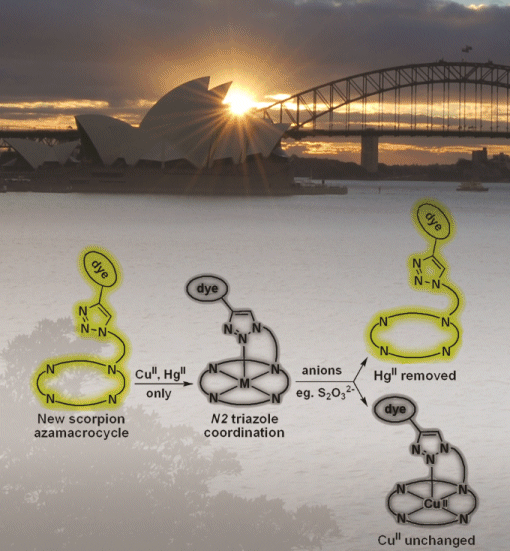There is a new scorpion king—A new fluorescent sensor has been synthesized which enables the detection of two harmful pollutants—mercury and copper.
Rutledge and Todd, University of Sydney, Australia, assembled the azamacrocyclic complexes and ‘clicked’ the dye-tail in place using click chemistry. The triazole ‘scorpion’ acts as a fluorescent sensor; its fluorescence is quenched by the presence of either CuII or HgII in neutral aqueous solution. Iodide and thiosulfate anions allow the fluorescent signal to be briefly restored with mercury only, providing a simple method to distinguish solutions containing CuII, HgII, or a mixture of the two, as demonstrated on samples of sea water taken from Sydney Harbour.
X-ray crystal structures of both the HgII sensor complex and a model CuII complex proved that pendant triazole coordination occurs through the central nitrogen atom (N2), which is a very unusual coordination mode in macrocycles. Further experiments revealed that the mechanism of anion-induced fluorescence revival involves either displacement of pendant coordination or complete removal of the HgII from the macrocycle, depending on the anion.

Image: (c) Wiley-VCH
- A Click Fluorophore Sensor That Can Distinguish CuII and HgII via Selective Anion-Induced Demetallation
Y. H. Lau, J. R. Price, Dr. M. H. Todd, P. J. Rutledge,
Chem. Eur. J. 2011.
DOI: 10.1002/chem.201002477



